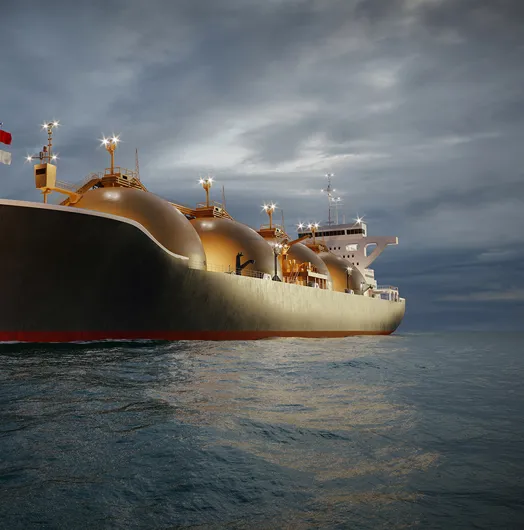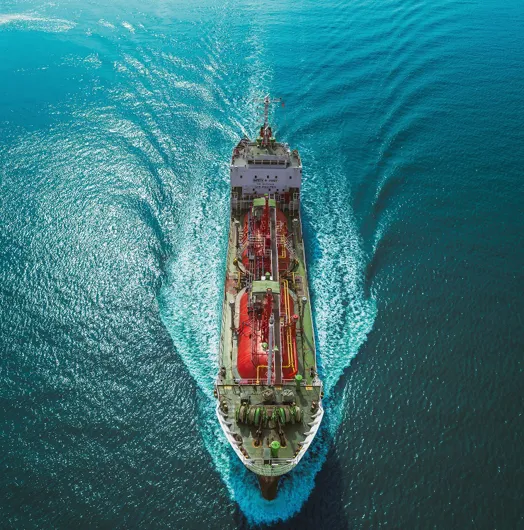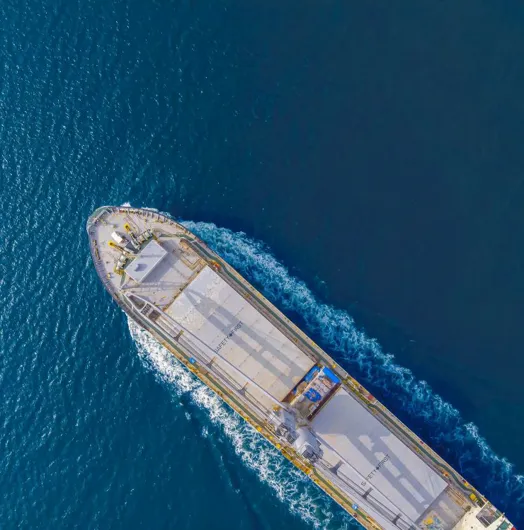Japan recently announced ambitious plans to import 3m tons of green ammonia by 2025 and 30 million tons by 2030 for power generation. And analysts are currently predicting an even more significant surge in demand if ammonia is proven to be a viable alternative for marine propulsion. While the drive to reduce carbon emissions with green ammonia is undoubtedly a step in the right direction, it is important to note that the associated production processes and use of ammonia as a marine fuel will not come without issues. In this article we examine some of the potential challenges and drawbacks to green ammonia uptake.
The production process
We are already aware of several existing producers who are prepared to invest significantly in the carbon capture technology required to improve existing production processes.
Blue ammonia is seen by many as the first step towards a greener market, where carbon efficiency can be increased by as much as 90%, in some cases. Those already investing have an expectancy that there will be a premium on that product, but it remains to be seen what the real value will be.
It is worth noting however that any new process will involve and create carbon emissions along the full construction chain right up until completion, and to some extent throughout the life of the plant (otherwise known as life-cycle emissions or well-to-wake). Altering or upgrading existing production plants (grey or brown) may offer an alternative, less carbon intensive solution to this issue.
Safety
Ammonia is a colourless, pungent, corrosive and highly irritating gas, which is dangerous (often fatal) if inhaled. Although not particularly flammable due to a smaller flame pattern, it is nevertheless explosive under containment if exposed to heat. Extensive trials will be required to counter the increased safety risks caused by the inherent nature of ammonia.
Gas vessel containment systems (tanks, valves, etc.) are highly evolved and have a remarkable safety record. While the possibility of using ammonia as a marine fuel for gas ships and other types of vessels is technically feasible, it would require fitting ammonia bunker storage tanks and additional lines, pumps, valves etc.
Existing production scaled up
While ammonia’s role in green initiatives is undoubtedly important, the role it plays in food production is paramount. As such, we can expect to see production scaled up, particularly outside of Russia, causing changes to the trade patterns that we see today.
Gas vessel containment systems (tanks, valves, etc.) are highly evolved and have a remarkable safety record. While the possibility of using ammonia as a marine fuel for gas ships and other types of vessels is technically feasible, it would require fitting ammonia bunker storage tanks and additional lines, pumps, valves etc.
NOx emissions
While no CO₂is emitted during ammonia combustion, the process does produce Nitrous Oxide (NOx). It is therefore a priority to avoid NOx slippage, which is more damaging than methane slip in LNG-fuelled engines. MAN ES are looking at using a NOx SCR scrubber in emission control areas, however this solution comes with its own associated issues – mainly cost and the logistics of storing large quantities of urea. This is now a key focus of research.
Efficiency
Ammonia has around half the energy density of LPG, LNG and traditional marine fuels (see table below). This means that it requires around double the volume of ammonia to be injected into the engine, using higher pressure (80 bar instead of 50 bar) and pipes with a larger diameter.
| Fuel |
Energy density (MJ/It) |
| Ammonia |
15.7 |
| LPG |
24.88 |
| LNG |
21.6 |
In short, this means consuming a much greater volume of ammonia than traditional fuels (which produces other undesirable pollutants) in a bid to produce less CO₂. From an environmental standpoint, it is easy to see why some investors may question the logic of this process. This also results in a limited sailing range when compared with other fuels, unless utilising ammonia from the cargo tanks in the case of a vessel trading ammonia.
Price
Ammonia has been a relatively cheap commodity until recently, where it has risen on a par and sometimes to double the price of conventional fuels. Given the quantities required, such prices could easily make ammonia an inefficient prospect.
In Conclusion
While all decarbonisation efforts have drawbacks, the likely advent of green ammonia production and the possibility of ammonia as a marine fuel must be seen as positive developments. Both could provide a significant boost to the ammonia industry.




